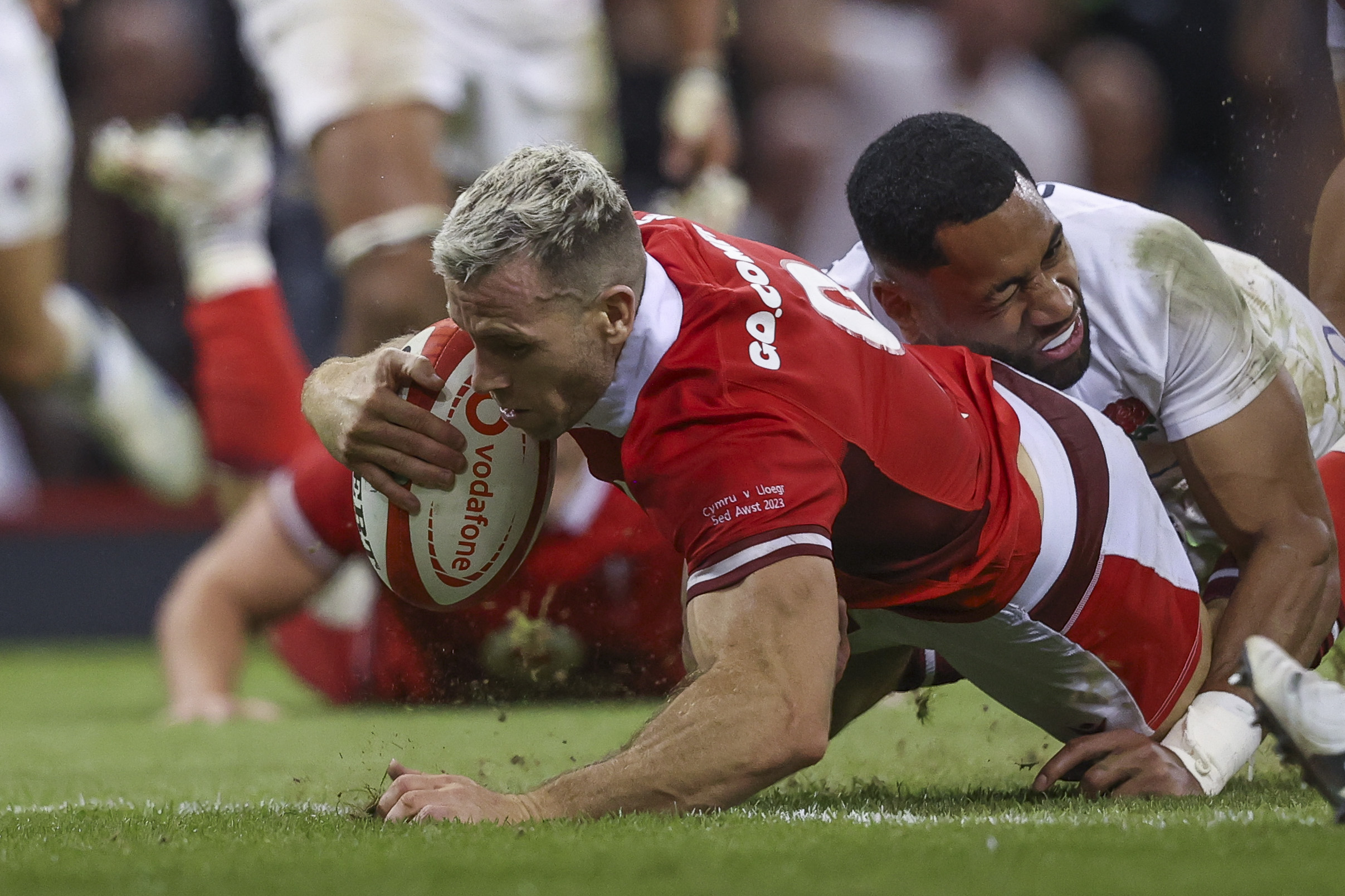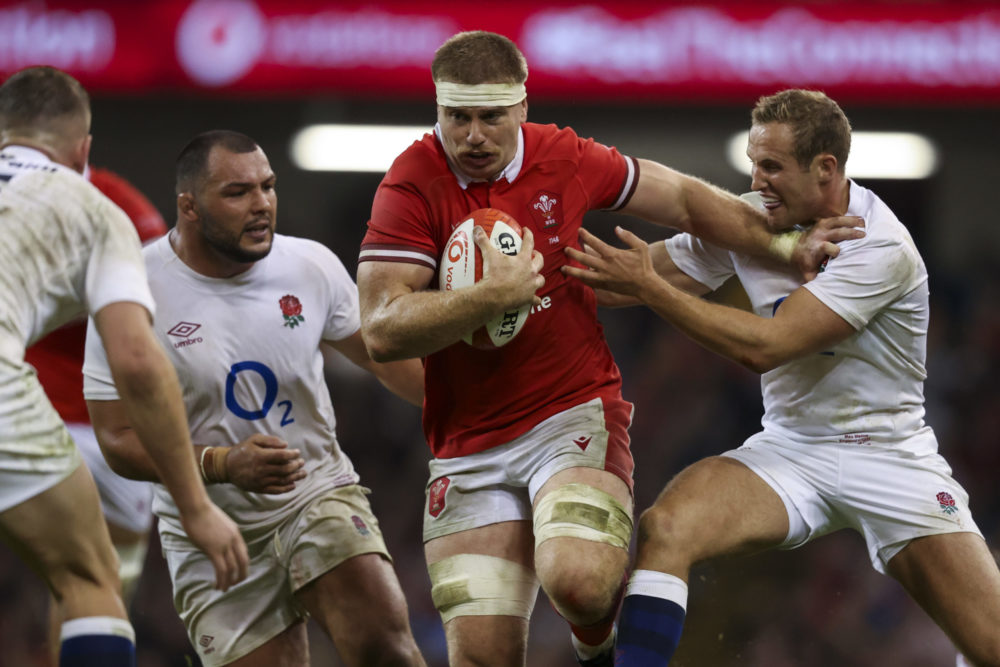Red faces for the Red Roses as Gatland’s new-look Wales stir memories of 2011

Simon Thomas
Well, Warren Gatland was true to his word. He had promised that his new-look Wales team was going to surprise a few people and that’s precisely what they did on Saturday evening at the Principality Stadium.
The expectations of both public and pundits alike had been pretty low-key after a disappointing Six Nations campaign which had delivered just a solitary victory over Italy amid an air of general turbulence in Welsh rugby.
Former Test fly-half Stuart Barnes had gone as far as to say it would be embarrassing if England lost in Cardiff given the state of the game in Wales and looking at the two sides selected.
In the end, it was the Red Roses who were left with red faces, as they ran out of puff after the break.
There has been much talk of how the Welsh squad has been beasted during their training camps in Switzerland and Turkey, with senior players saying they have never experienced anything like it before.
Well, it’s clear it has paid off, with the hosts’ fitness levels shining through as they increasingly imposed themselves after trailing 9-6 at the break in this opening World Cup warm-up match.
Now sometimes fitness is achieved at the expense of work with ball in hand and that can show up in the form of rustiness in first hit-outs.
But it was actually England who were the rusty unit, amid sloppiness and a lack of precision, as they turned the ball over no fewer than 24 times.
Wales were more precise and accurate with ball in hand, something which became particularly evident in the second half as they enjoyed a much improved slice of possession.
There was a quicker tempo to their attacking and a greater sense of purpose and clarity, while they were also by far the more clinical of the two sides.
England made no fewer than 12 entries into the opposition 22, but failed to score a single try. In contrast, Wales – off five fewer incursions – touched down twice, through Gareth Davies and George North, while they came tantalisingly close to two more, through Louis Rees-Zammit.
Offloading game
The offloading game we had seen hints of towards the end of the Six Nations was evident again and what was impressive was how often the ball stuck given this was their first game in months.
Young Sam Costelow played flat at fly-half, looking to challenge the line and make things happen, the inside pass that put Rees-Zammit through in the first half a fine example, with the hosts beating 21 defenders in all.
While there were positive signs from an attacking point of view, there was also much to commend in the defensive effort.
Keeping England tryless speaks for itself, with the way that was achieved worth recording. Wales were under the cosh for a good 15 minutes before the break, but refused to buckle, with their scramble defence saving them on a couple of occasions.
Centre North performed heroics to halt Max Malins in the corner just as the winger seemed odds on to score and he then popped up on the other side of the pitch to tidy up with an interception after some last ditch defiance from Rio Dyer.
What was particularly impressive was that even with the game won, Wales were still not about to let England cross their line as they held firm in the face of a late assault.
It’s fair to assume defence coach Mike Forshaw will be a pretty contented man.
The hosts also used the bench to good and telling effect. There had been a few issues at the scrum in the first half, with three penalties and a free kick conceded.
But the introduction of fresh propping legs in Henry Thomas and Nicky Smith helped turn the tide with the penalties starting to flow in the other direction.
It was a Wales debut to remember for tighthead Thomas as he lined up against the country he won seven caps for a decade ago. The 31-year-old will have done himself no harm whatsoever in terms of his chances of making the plane to France.
There was a further eye-catching cameo from another debutant in Taine Plumtree. This will have been the first time most Welsh fans will have seen the flanker in action and they would no doubt have been impressed by what they say. He’s big, he’s agile and he really imposed himself at the lineout, with a soaring steal at a key moment being a real highlight.
Plumtree added to a lineout that went really well throughout. They were 100 per cent on their own ball, with a nod here to the throwing-in of early sub Elliot Dee, while sufficient pressure was applied to cause five English malfunctions.
Zip
So, with the scrum sinews stiffening, Wales had a real platform to work off after the break and started to show what they could do with decent ball, replacement scrum-half Tomos Williams adding some fresh zip along the way.
What was perhaps most telling was the way they steadily grew in confidence in the second half. This was a new unit and it was going to take time for nerves to settle and for them to find their feet. But, as the clock ticked by, you could see the realisation dawning on them that this was a game they could win and the belief started to course through their veins.
Pleasantly surprised at what they were watching, the home fans in the 65,000 crowd responded, the noise volume rose and there was a real sense of a new beginning unfolding, as they bought into this fresh-faced ensemble.

In that respect, the comparisons with the build-up to the 2011 World Cup are becoming more and more acute.
The symmetry is actually quite spooky. That year, a Scarlets hooker captained Wales in the Six Nations, Matthew Rees. Injury ruled him out of the World Cup and a young flanker by the name of Sam Warburton was handed the reins, first for the build-up and then the tournament itself, with fellow fledglings Faletau, Priestland, Jonathan Davies, Lydiate and North alongside him.
This year, another Scarlets hooker was Six Nations skipper in Ken Owens. The same fitness fate has befallen him and he too has been replaced at the helm by a young openside in Jac Morgan.
In 2011, the same as this year, there were back-to-back warm-up games against England, with Warburton named Man of the Match after an unexpected win in Cardiff.
Now Morgan has followed in his footsteps by leading a rookie-laden line-up to victory at home to the old enemy and earning the player of the match prize.
In August 2011, the score was 19-9. This time it was 20-9. As I say, spooky.
Morgan’s effort was ceaseless and highly effective, as demonstrated by 25 tackles – nine more than any other player on the pitch – with a number of them dominant hits, plus ten carries.
But there were two showreel moments that really stood out.
First there was the key part he played in setting up Wales’ opening try as he took a pass from Aaron Wainwright out on the right and then showed great composure and decision making.
There was a little dummy as he surveyed his options, before he cut inside both Joe Cokanasiga and Freddie Steward before giving the scoring offload to supporting scrum-half Davies just as he was brought to ground by Lewis Ludlam.
Watching live from the side, you wondered whether he had held on to the ball too long or chosen the wrong option. Not a bit of it. He got it spot on.
Then a few minutes later came the other moment that is sure to be replayed numerous times, as he put in a shuddering tackle on opposite number Tom Pearson lifting him up in the air and driving him backward.
Gavin Henson
It revived memories of Gavin Henson hoisting England’s Mathew Tait skyward at the start of the 2005 Grand Slam and you could just sense the energy it instilled in Welsh ranks both on and off the field.
A tweet I saw seconds later summed up the mood. It read simply “I think we have found our new Sam.”
It was a tremendous display from Morgan who has to be favourite now to follow in Warburton’s footsteps and lead Wales to a World Cup in his early 20s.
Just as impressive was his back row colleague Aaron Wainwright. Gatland called it his best performance in a Welsh jersey and it’s hard to argue with that assessment.

The former Cardiff Met student had slipped into the international wilderness following Gatland’s departure in 2019 and there have been periods where he wasn’t even a regular starter for the Dragons.
But there were signs of him recapturing something like his best form following his call-up to face France in the Six Nations finale and now he has moved up another gear again, showing the dynamism and athleticism that made him a regular during the latter years of Gatland’s first reign.
He did numerous good things, amid 12 purposeful carries and a strong defensive shift, but his part in Wales’ opening try deserves special mention.
Standing bang in front of the press box on the right wing, he had been waving frantically for a good few seconds to try and attract the attention of Costelow on the other side of the pitch as the ball was about to come back from a ruck.
To Costelow’s credit, he spotted him and put a pinpoint cross-kick right into his arms. Wainwright then proceeded to fully justify having demanded the ball, by drawing in two defenders before delivering a killer one-handed offload to Morgan on his inside. The defence was breached.
Old school
As for the second Welsh score, well that was old school Gatland, as they gradually wore the English defence down, going left and right and through 14 phases before the gap eventually opened up enabling North to step inside for his 45th try for his country.
It was some all-round display from North, with his try-saving, his try-scoring and a stint on the blindside flank after Wales ran out of forwards, with fellow centre Mason Grady also having a spell there.
Those emergency duties were required because second row Dafydd Jenkins had limped off with a knee problem and one hopes it’s nothing serious as the young lock excelled in the lineout and showed up well around the field.
Similarly, fingers will be firmly crossed that hooker Ryan Elias’ hamstring tear isn’t too bad and that he can recover in time to make the trip to France.
So a couple of injury worries and still much to work on, with tougher opposition to come, starting with a stronger England side at Twickenham next Saturday, while the performances from World Cup group opponents Fiji and Australia over the weekend demonstrate the challenge that lies ahead.
But overall, pretty encouraging. Once again, Gatland has proven that when he has a squad together for a good length of time he can bring about significant improvements.
Hopefully that process will now continue and he will be able to make good on that other promise he has made – about Wales doing something special at the World Cup.
Support our Nation today
For the price of a cup of coffee a month you can help us create an independent, not-for-profit, national news service for the people of Wales, by the people of Wales.






